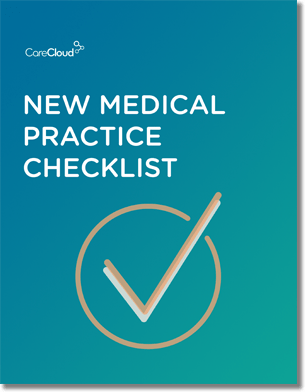Articles on electronic health record planning, purchasing, training and so on do a great job of focusing on the technical aspects doctors need to know about EHRs, as well as what kinds of questions to ask vendors.
What about your staff? Those are the people who carry your practice on their backs and ensure the success of the EHR. Below are some tips to support your staff through the phases of electronic health record adoption.
Preparation, Planning and Organizational Phase
Your first step is to plan pursuit of an EHR for your practice. Your staff should be involved to varying degrees. For instance, all staff members should become familiar with a glossary of EHR terms so they won’t be thrown off once acronyms like CPOE and HIE start getting tossed around.
It’s also important to move into EHR adoption gradually, adopting one or just a few components per each phase of the adoption. This kind of EHR migration path eases technology adoption for all members of your staff.
Create goals with your staff members, then hand them back so they can become better acquainted and personally invested in the practice’s mission. Using the S.M.A.R.T. goal model helps here – it’s easy to separate goals into Specific, Measurable, Achievable, Relevant, and Time-bound checkpoints.
And finally, included in this first phase is how to organize the effort. How much staffing does your practice need? How much work can be accomplished through voluntary time?
Training and Implementation
As you transition from organizing your EHR efforts, you realize you may need additional staff, especially if you’re a mid-sized to large practice. You may also realize it’s beneficial to bring in expert consultants, so ensure your staff that this is really just temporary help, and no one will be cut.
Remind your staff that extra hours and ongoing commitment to the EHR past implementation will make their jobs easier by expounding on the benefits of a paperless practice and streamlined workflows.
During training, you’ll be assigning one in-house clinician to be trained by the vendor. This staff member will then serve as the practice’s trainer, and it’s essential that you give him/her the authority necessary for other staff members to listen.
Furthermore, create an EHR project team from your staff, and ensure they receive proper education and training on what an EHR is, what steps are involved in the implementation, and how to achieve optimal utilization to meet practice goals.
Lastly, members of your staff who will be using the EHR must be trained as close to go-live as possible. The day before the EHR goes live, hold a rehearsal with your staff to ensure they at least have a basic grasp of the functionalities they are responsible for.
Role play between physicians and staff members acting as patients verifies your clinicians and staff members have been properly trained, provides a practice session where they can get rid of some of the butterflies in their stomachs and helps them feel comfortable using the system at the point of care.
Ensuring Adoption
Begin by identifying problematic staff members, and employ some of the change management techniques we discussed last week.
Later, realize there is more to full adoption than simply getting your staff to use the EHR. Ensure goals are being met by checking whether staff members and other physicians at your practice are fully documenting visits with the available templates and prescribing medication electronically.
Also, monitor non-physician staff use – ensure they’re making full use of the appointment scheduler, or processing any requests a physician at your practice may have. This is the time to bring back the abovementioned S.M.A.R.T. goals and measure their rate and level of success post-adoption.
Once you’ve monitored your original workflow and process goals, enhance staff training if some members are falling short in some areas of EHR usage, and review workflow and process goals with your users.
Lastly, if an employee at the Apple store congratulates you on your new iPad, why wouldn’t you celebrate your new electronic health record? You can use the EHR to reform your practice culture.
Plan the celebration, too, using help from a group of staff members in charge of this – a party planning committee, if you will. Don’t forget to tailor to your practice’s organizational culture and if you always celebrate things at the office with a pizza party, dare to change it up!
How do you plan to support your staff during the stressful EHR process?

Do you know what you need when setting up a new medical practice?



